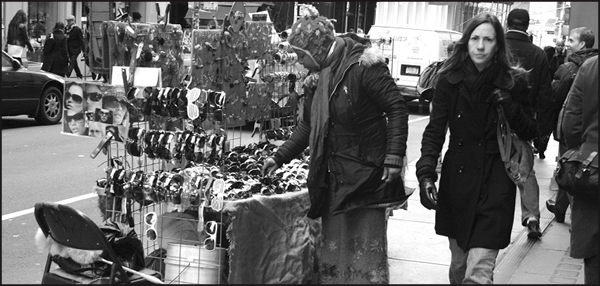By Kara Bloomgarden-Smoke
A Department of Transportation proposal to close six blocks of Prince St. in Soho to car traffic on Sundays is steering proponents and opponents on a collision course, as they paint vastly different portraits of what will transpire if the plan is enacted.
On Tues., March 11, the Traffic and Transportation Committee of Community Board 2 heard a proposal by D.O.T. on whether to make Prince St. between Lafayette St. and West Broadway into a car-free zone on Sundays between 11 a.m. and 6 p.m.
The meeting was expected to draw a large crowd, and the presentation was last on the agenda in order to allow for what promised to be an impassioned debate.
Sean Sweeney, director of the Soho Alliance neighborhood association, has taken to calling the pilot program — which is scheduled to run on a trial basis between Memorial Day and Labor Day — the “Prince St. Mall.”
Those who support the proposal take issue with the term.
“It already is a mall, it is just that people drive their S.U.V.’s through it,” said Ian Dutton, vice chairperson of the board’s Traffic and Transportation Committee.
The two main issues for debate are the resulting car traffic in the surrounding streets, and the prospect of increasing the number of street vendors.
In nearby Little Italy, several streets have been closed to pedestrians during the summer, and both sides of the Prince St. debate point to Little Italy as an example of what they don’t want to see happen in Soho.
“This already exists on Mulberry St., and the neighbors hate it,” said Sweeney.
“Little Italy has bad examples of pedestrian streets,” countered Dutton. “They bring in vendors and entertainment to try and draw crowds to the restaurants and shops. Soho already is a tourist destination.”
“This will not be a festival; there will be no carts and jugglers and corn dogs,” said Andy Wiley-Schwartz, assistant commissioner of planning and sustainability at D.O.T.
Robert Riccobono, speaking in his capacity as vice director of the Soho Alliance, said he is doubtful that the city will be able to prevent a “congested carnival atmosphere.”
“The city has proven to be ineffective at dealing with vendors,” said Riccobono. “The laws are not currently enforced.”
Riccobono is also second vice chairperson of C.B. 2.
Wiley-Schwartz contends that D.O.T. will be aided by the Department of Consumer Affairs and the Police Department.
“We do not want vending to proliferate,” he stressed.
According to Riccobono, the main problem affecting traffic on Prince St. right now is the vendors.
“If they get rid of vendors it will reduce congestion so much it will be like night and day,” said Riccobono.
Soho has faced an increase in both vehicle and pedestrian traffic in recent years, and this fact figures heavily into the arguments for and against this proposal.
The Soho Alliance is opposed to the proposal and expresses concern that it would worsen the traffic on the surrounding streets.
“Traffic is not water. If it is cut off from one street, it won’t automatically flow into the next one,” argues Dutton. “Drivers will find new routes or avoid the area altogether.”
Shirley Secunda, chairperson of the C.B. 2 committee, compared the traffic complaint to Washington Square Park in the “late 1950s or early 1960s.”
“Washington Square Park had buses and traffic that went through it,” said Secunda. “When they wanted to close off the park to traffic, people made dire predictions that eliminating traffic would clog the nearby streets, but that was not the case.”
Secunda added that the mall proposal was “only for one day a week for three months of the year.”
Riccobono said the problem is that there is no clear vision for the larger area.
“There is no plan to ensure a smooth flow of traffic in the area,” he contended. “There will be more cars idling and few cars moving, and there hasn’t been any thought given to the intersections.”
The Prince St. pedestrian mall proposal is drawing upon the findings of a survey by the advocacy group Transportation Alternatives.
Both sides of the argument support Mayor Bloomberg’s initiative under his PlaNYC to reduce the amount of vehicle traffic in Manhattan.
Based on Tuesday night’s presentation, the board’s Traffic and Transportation Committee will then make a recommendation to the full community board, at which time there will be another opportunity for debate and possibly a vote to recommend approval or denial of the proposal.


































